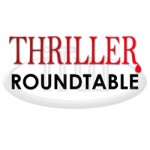December 9 – 15: “Can there be too many surprises in a thriller plot?”
 This week we’re joined by ITW members Matt Coyle, Susan Sleeman, Colleen Winter and Matt Buchman as they answer the questions: Can there be too many surprises in a thriller plot? Must each thrill help move the plot? Whenever you’re ready just scroll down to the “comments” section to follow along!
This week we’re joined by ITW members Matt Coyle, Susan Sleeman, Colleen Winter and Matt Buchman as they answer the questions: Can there be too many surprises in a thriller plot? Must each thrill help move the plot? Whenever you’re ready just scroll down to the “comments” section to follow along!
 Susan Sleeman is the bestselling author of more than 35 romantic suspense novels with more than 1 million books sold. She has won several awards, including the ACFW Carol Award for Suspense for Fatal Mistake and the Romantic Times Reviewers’ Choice Award for Thread of Suspicion. In addition to writing, Susan also hosts TheSuspenseZone.com. She has lived in nine states but now calls Portland, Oregon, home.
Susan Sleeman is the bestselling author of more than 35 romantic suspense novels with more than 1 million books sold. She has won several awards, including the ACFW Carol Award for Suspense for Fatal Mistake and the Romantic Times Reviewers’ Choice Award for Thread of Suspicion. In addition to writing, Susan also hosts TheSuspenseZone.com. She has lived in nine states but now calls Portland, Oregon, home.
 Colleen Winter is a science-fiction junkie and uses her electrical engineering degree to create stories that walk the line between what is real and what is possible. In a previous life, she worked as a journalist and now is a communications consultant in the Ontario electrical industry. She lives near Toronto, Canada and spends as much time as she can rock climbing and hiking the beautiful places of the world with her family and her dog.
Colleen Winter is a science-fiction junkie and uses her electrical engineering degree to create stories that walk the line between what is real and what is possible. In a previous life, she worked as a journalist and now is a communications consultant in the Ontario electrical industry. She lives near Toronto, Canada and spends as much time as she can rock climbing and hiking the beautiful places of the world with her family and her dog.
 M. L. “Matt” Buchman has 60+ thriller and romance novels, 100 short stories, and lotsa audiobooks. Booklist says: 3x “Top-10 Romance of the Year” and among “The 20 Best Romantic Suspense Novels: Modern Masterpieces.” NPR and B&N say “Best 5 Romance of the Year.” A project manager with a geophysics degree, he’s designed and built houses, flown and jumped out of planes, solo-sailed a 50’ sailboat, bicycled solo around the world…and he quilts.
M. L. “Matt” Buchman has 60+ thriller and romance novels, 100 short stories, and lotsa audiobooks. Booklist says: 3x “Top-10 Romance of the Year” and among “The 20 Best Romantic Suspense Novels: Modern Masterpieces.” NPR and B&N say “Best 5 Romance of the Year.” A project manager with a geophysics degree, he’s designed and built houses, flown and jumped out of planes, solo-sailed a 50’ sailboat, bicycled solo around the world…and he quilts.
 Matt Coyle is the author of the Rick Cahill mysteries. He knew he wanted to be a crime writer at age 13 when his father gave him Raymond Chandler’s The Simple Art of Murder. His books have won the Anthony, Ben Franklin Silver, Foreword Reviews Book of the Year Silver, and San Diego Book Awards, and have been nominated for the multiple Macavity, Shamus, and Lefty Awards. LOST TOMORROWS is the sixth book in the Cahill series. Matt hosts the Crime Corner podcast on the Authors on the Air Global Radio Network and lives in San Diego with his yellow Lab, Angus.
Matt Coyle is the author of the Rick Cahill mysteries. He knew he wanted to be a crime writer at age 13 when his father gave him Raymond Chandler’s The Simple Art of Murder. His books have won the Anthony, Ben Franklin Silver, Foreword Reviews Book of the Year Silver, and San Diego Book Awards, and have been nominated for the multiple Macavity, Shamus, and Lefty Awards. LOST TOMORROWS is the sixth book in the Cahill series. Matt hosts the Crime Corner podcast on the Authors on the Air Global Radio Network and lives in San Diego with his yellow Lab, Angus.
- LAST GIRL MISSING with K.L. Murphy - July 25, 2024
- CHILD OF DUST with Yigal Zur - July 25, 2024
- THE RAVENWOOD CONSPIRACY with Michael Siverling - July 19, 2024
